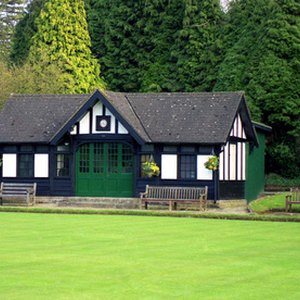
The acre as a unit of land measurement was originally defined as the amount of land a farmer with a team of oxen could plow in one day. One acre is equal to 43,560 square feet.
Figuring out how much acreage you have may be as simple as multiplying your property’s length times its width to find its area in square feet. Then divide the area square footage by 43,560. However, it gets a bit more complicated when your property is irregularly shaped or has curves.
Check the Deed
One quick way to find out the acreage of your home property without doing any math is to check your deed. The number of acres a property contains is listed on the deed as part of the property’s description. If you’ve misplaced your deed, or you need the information quicker than the time it would take to find it, go to your county recorder's or tax assessor’s website.
Deeds are public records. So, in most municipalities, you can look yours up (and anyone else’s) on one or both of these websites. You’ll need the property’s address to look up the deed.
Check the Maps
The county recorder's or tax assessor’s offices have official maps of the geographical areas under their jurisdiction. You can view these maps in their offices and/or request copies. Many municipalities also make these maps available online.
Be sure that the map you’ve requested clearly shows the property lines of the property you’re trying to measure. It should also show the measurements of the property in feet and inches above or below each line. From those numbers, you can calculate the property’s acreage with the same formula – length times width divided by 43,560.
Hire a Surveyor
If, after you’ve done your research and calculations, you still want to be absolutely certain about the acreage of your home, consider hiring a professional surveyor. If your property is of walkable size, the surveyor will use a theodolite and very long measuring tape, along with other tools to calculate your acreage. A theodolite is an instrument mounted on a tripod that can measure horizontal and vertical angles.
If your property is very big, the surveyor may use a drone to get accurate measurements. The cost of a professional land survey ranges from several hundred dollars to thousands of dollars depending on factors like the size and location of the land. But you’ll save money in the long run if you ever need the survey results for legal or financing purposes.
The only type of land survey that has any legal clout is one done by a professional surveyor. While step-by-step instructions on how to do your own survey are easy to find online, if a property dispute lands you in court, a DIY survey is meaningless. Professional survey results are also the only kind a bank will look at if you’re using your land as collateral to get a loan.
Acreage Measures Surface
You may wonder if the topography of your land affects its measurement in acres. It doesn’t. All property is measured parallel to the horizon. A hilly property may contain more dirt, but an acre of hilly land is the same size as an acre of flat land.
This is because acreage is a two-dimensional surface measurement. Whether your property is hilly, sloped or both, its acreage is still length times width, divided by 43,560.
Acreage of my Home Calculators
You can find acreage calculators online to do quick calculations for you. Most of them work fine if the property you’re measuring is a simple square or rectangle. For land that is irregularly shaped, you’ll want to search for area calculators. Area calculators list shapes other than squares and rectangles, like triangles, trapezoids, ellipses and sectors.
Using the map you obtained from your county recorder or tax assessor, draw lines to break the land up into smaller, simpler shapes. Plug the measurements of each broken down shape into its area calculator. Add them all up to get the total estimated land area in square feet. Divide that total by 43,560 and you’ll have an estimate of your acreage.
Total Versus Usable Acres
If you’re shopping for a home with land, you might see two acreage measurements in its listing; total acres and usable acres. Usable acres is usually the flat or almost flat part. But there’s no standard definition of "usable acres" so be sure to ask questions.
"Usable acres" may mean that it’s land that can be built on without major excavation work. Or, it may mean that it’s land you can graze livestock on. Big difference. Horses, cattle, sheep and goats can be pretty resourceful about reaching greenery even if it’s in a steep and rocky spot.
References
Writer Bio
LeDona Withaar has over 20 years’ experience as a securities industry professional and finance manager. She was an auditor for the National Association of Securities Dealers, a compliance manager for UNX, Inc. and a securities compliance specialist at Capital Group. She has an MBA from Simmons College in Boston, Massachusetts and a BA from Mills College in Oakland, California. She has done volunteer work in corporate development for nonprofit organizations such as the Boston Symphony Orchestra. She currently owns and operates her own small business in addition to writing for business and financial publications such as Budgeting the Nest, Zacks and PocketSense.

